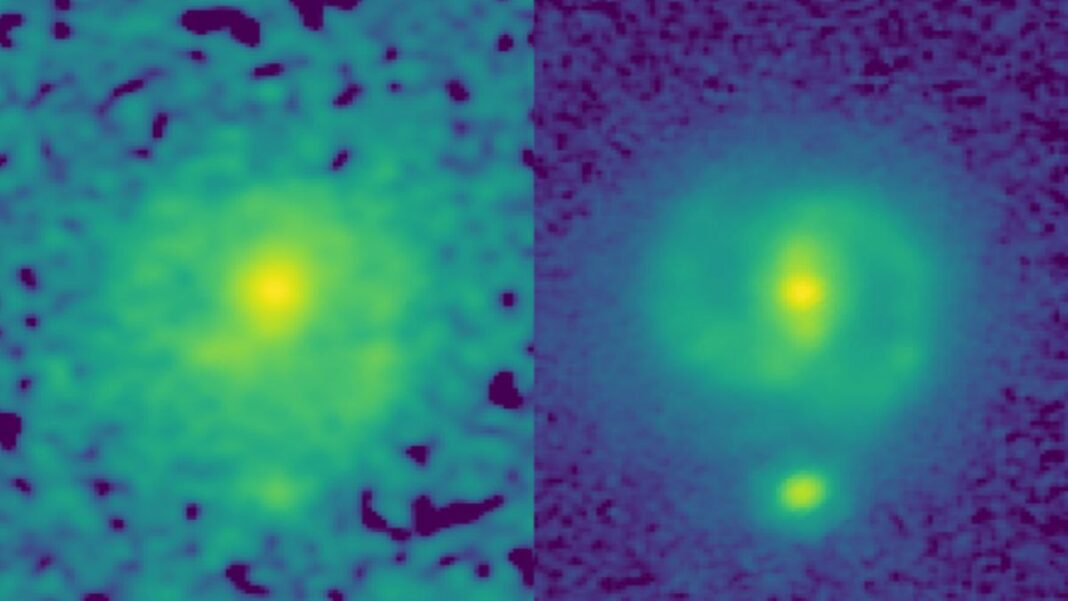UNITED STATES: Galaxies with stellar bars from a time when the cosmos was only 25% as old as it is now have been seen in new photos from NASA’s James Webb Telescope.
Stellar bars are extended characteristics of stars that extend from the galactic centres into the outer disc.
The University of Texas at Austin claims that the discovery of barred galaxies like our Milky Way will force astronomers to improve their theories of galactic evolution.
No space telescope had ever discovered bars at such an early period in the universe’s history before Webb took these pictures.
A JWST view of the galaxy EGS-23205 reveals a whole spiral galaxy with a distinct star bar, in contrast to Hubble images of the galaxy, which only reveal a disk-shaped smear.
The research team also discovered EGS-24268—another barred galaxy—roughly 11 billion years ago. These two barred galaxies are the oldest ones that have ever been found together.
According to Shardha Jogee, co-author of the study accepted for publication in The Astrophysical Journal Letters, “After seeing these figures, I immediately exclaimed, “We are dropping everything else!” The stellar bars that were barely discernible in Hubble data “simply jumped out in the JWST image, indicating the extraordinary power of JWST to see the underlying structure of galaxies.”
By directing gas into the central area of the galaxies, these stellar bars contribute significantly to the galactic evolution by promoting star formation.
They can be seen as addressing a “supply chain problem” in galaxies in some ways.
These stellar bars convey gas into the core region, where it is turned into new stars at a rate that is between 10 and 100 times quicker than in the rest of the galaxy, just like raw materials are transported from ports to factories to generate new products.
By guiding some of the gas along the way, this funnelling of gases by the bars also aids in the growth of supermassive black holes in the centres of galaxies.
Since early bars have been found, Jogee continued, “galaxy evolution models now have a new channel via bars to increase the formation of new stars during early epochs.”
These early bars present a difficulty for theoretical models since they depend on accurate galactic physics to determine the actual abundance of bars.
The researchers’ next objective, according to the University of Texas at Austin, is to evaluate many fresh models of galaxy physics.
Also Read: Mars Dust Storm Poses No Threat to Perseverance’s Rock Samples, Says NASA



